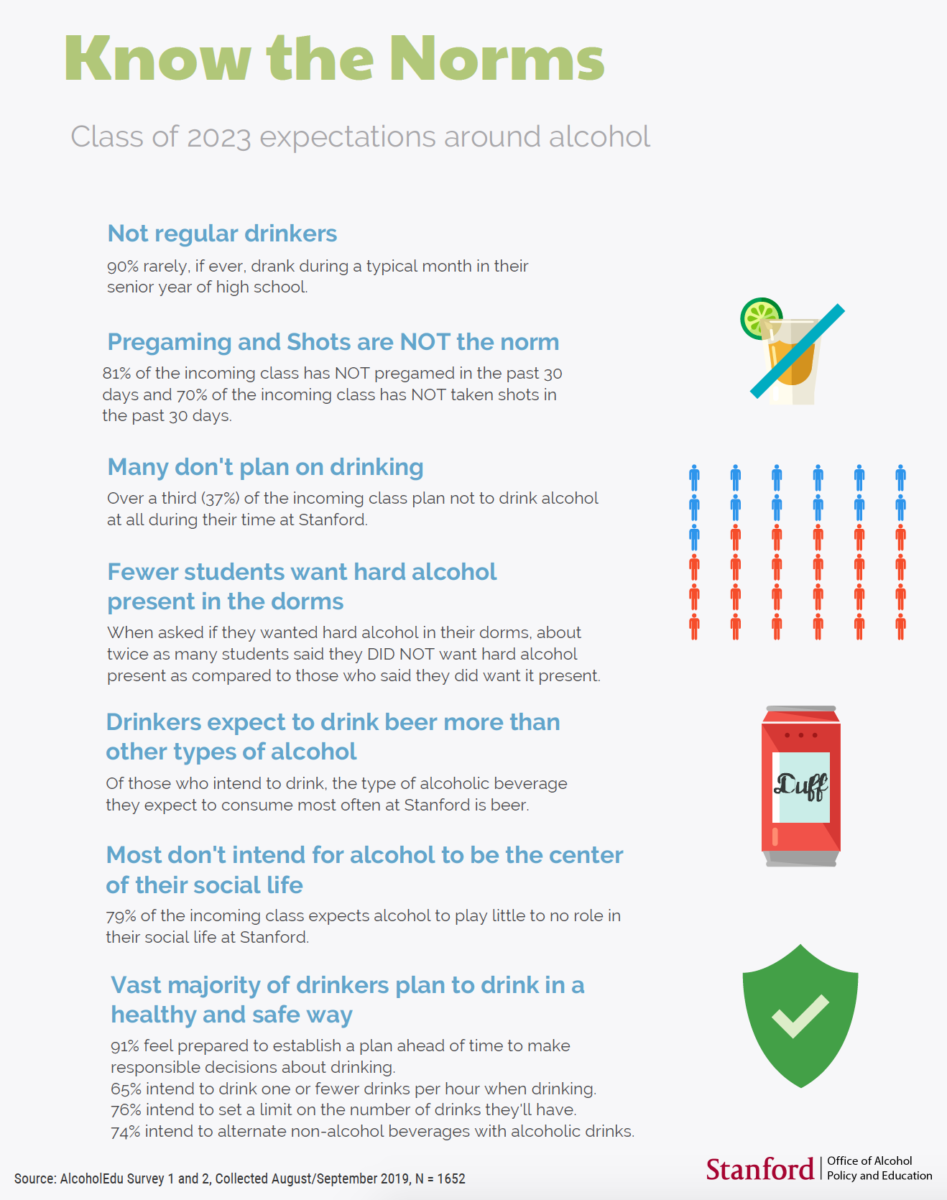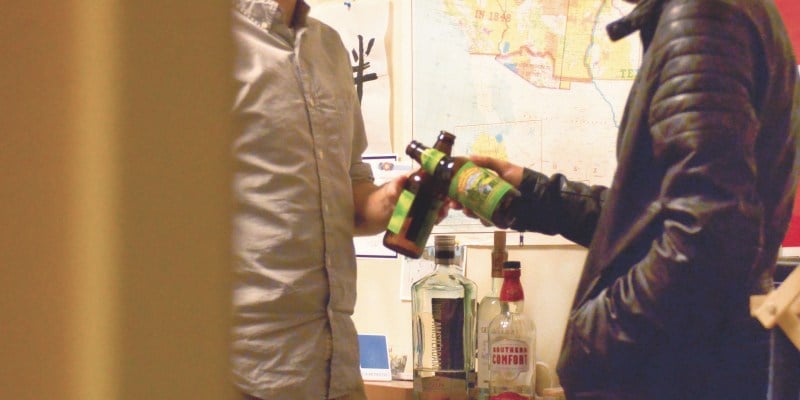Though Stanford continues to record a high number of alcohol-related transports, the class of 2023 demonstrated a preference for healthy drinking behavior, according to the data collected by the summer online alcohol course, AlcoholEdu, given to all incoming students.
While the Office of Alcohol Policy and Education (OAPE) data stands by the program’s efficacy, some students have pushed back against the idea that the program changes students’ perspectives on alcohol.
All incoming students are required to complete AlcoholEdu for College, which is designed to teach students about the potential consequences of alcohol usage and strategies to make healthy decisions.
According to the results of the course’s optional student survey, 90% of incoming students rarely drank during a typical month of high school, over one-third did not plan to drink at all in college and twice as many students did not want hard alcohol present in the dorms compared to those who did.
These data, which was released over email by OAPE director Ralph Castro in a “Know the Norms” infographic to incoming frosh, varied by only one or two percentage points with data from the class of 2022.

“Research shows that students who have these conversations before they arrive on campus have fewer alcohol-related issues,” wrote Castro in an Aug. 16 email to incoming freshmen, justifying the mandatory program. The first iteration of the AlcoholEdu program was introduced in 2006.
In an interview with The Daily, Castro pointed out that the data from the survey has largely remained consistent over the years.
“It’s nice to see that we’re not having increases,” he said. “This is my 21st year at Stanford, so I’ve seen the trajectory of drinking change over time. We’ve definitely seen an increase in the amount of hard alcohol that is consumed, and that’s been a big change where we’ve tried to do more information.”
Indeed, in the 2018-19 academic year, 58 students went to the emergency room for an alcohol-related incident, according to an annual OAPE report. That number was slightly lower than the 2017-18 high of 65 students, but above the four-year average of 52.75 students transported.
In response, the OAPE has increased the number of group educational sessions and workshops it conducts with students, as well as promoted Cardinal Nights Alcohol-Free Programming and 5-SURE rides and walks. In the spring, the University created the Alcohol Solutions Group (ASG) to recommend solutions to reduce the amount of high-risk drinking behaviors reported on campus. The ASG’s proposed changes are scheduled to be released sometime during the fall.
This is the second year the “Know the Norms” infographic has been created and distributed to freshmen. Castro noted that students were reporting proactive, safe intentions about alcohol, and the goal of the infographic is to reassure students that they are not alone.
“We wanted to shine a light on [that positive behavior] so students could see they weren’t just an N of 1 of making good choices but were a part of a whole community with a strong norm of wellness and taking care of yourself,” Castro said.
Based on the data from the program, Castro concluded that “a large number of students feel like they’ve learned something from it, and we know that it’s long and it’s tedious, but there is value to providing baseline information about alcohol to students. We know it’s not perfect, but it’s the best that we have right now.”
Jared Hysinger ’21, a Peer Health Educator (PHE) in Donner, says he initially had negative impressions of the course.
“I thought it was a meme. It seemed so sterile and it didn’t seem like real life,” he said.
But after the first Friday night of his frosh fall quarter, Hysinger said he came to appreciate the course.
“All of a sudden there was alcohol everywhere,” he said. “You have to confront that head on. I don’t know how much practical usefulness it has in the moment when people are drinking, but it sets a good norm that safe drinking is best.”
Hysinger also mentioned that the online course prepares students for future discussions within dorm communities about alcohol.
“Having a [dorm PHE] whose role it is to empower you to make safe choice is way more impactful than a distant online course,” he said, but the course “does a good job of setting the tone that this is something important that you should be thinking about.”
Student impact
Esteban Wu ’23 explained that while he came into college planning not to drink, seeing others drink made him reconsider his stance. He said he was surprised by the statistic that 90% of students rarely drank during a typical month in high school. “This seems suspect, to say the least,” he said. “I feel like the majority of my dorm goes out on Friday and Saturday nights, and a lot of them do not seem to be first-time drinkers.”
Wu said he appreciated the summer course.
“I feel like I learned a lot,” he said. “Some of the information wasn’t new, but it was still good to go over best practices as a refresher.”
He said that the OAPE had done a good job educating students, but PHEs were the best means of providing alcohol education. Wu commended “on-calls,” where dorm staff host alternative events to drinking on Friday and Saturday nights.
“I’ve gone to almost all of them and have not been disappointed,” he said.
A first-year student in Florence Moore hall, who had exposure to drinking in high school and was granted anonymity because they were concerned about discussing underage drinking, criticized the course.
She described the course as feeling like “middle school health class mixed with driver’s ed, in that I don’t remember anything from it, and it has no weight on any of my decisions.”
A first-year student in Freshman Sophomore College, also granted anonymity for being underage, said she had planned to drink in college as she assumed “drinking is a must in social contexts,” even though she disliked the physical effects of alcohol. However, after arriving, she said she found that there was not much pressure to drink.
While she found AlcoholEdu somewhat useful for learning about University policies surrounding alcohol, she did not believe the course changed her attitude toward drinking.
“I don’t think forcing people to listen to or read long, at times weirdly wordy, sometimes patronising passages about alcohol consumption is necessary for an alcohol education course,” she said, saying she would have preferred to “learn the most important facts Quizlet style.”
